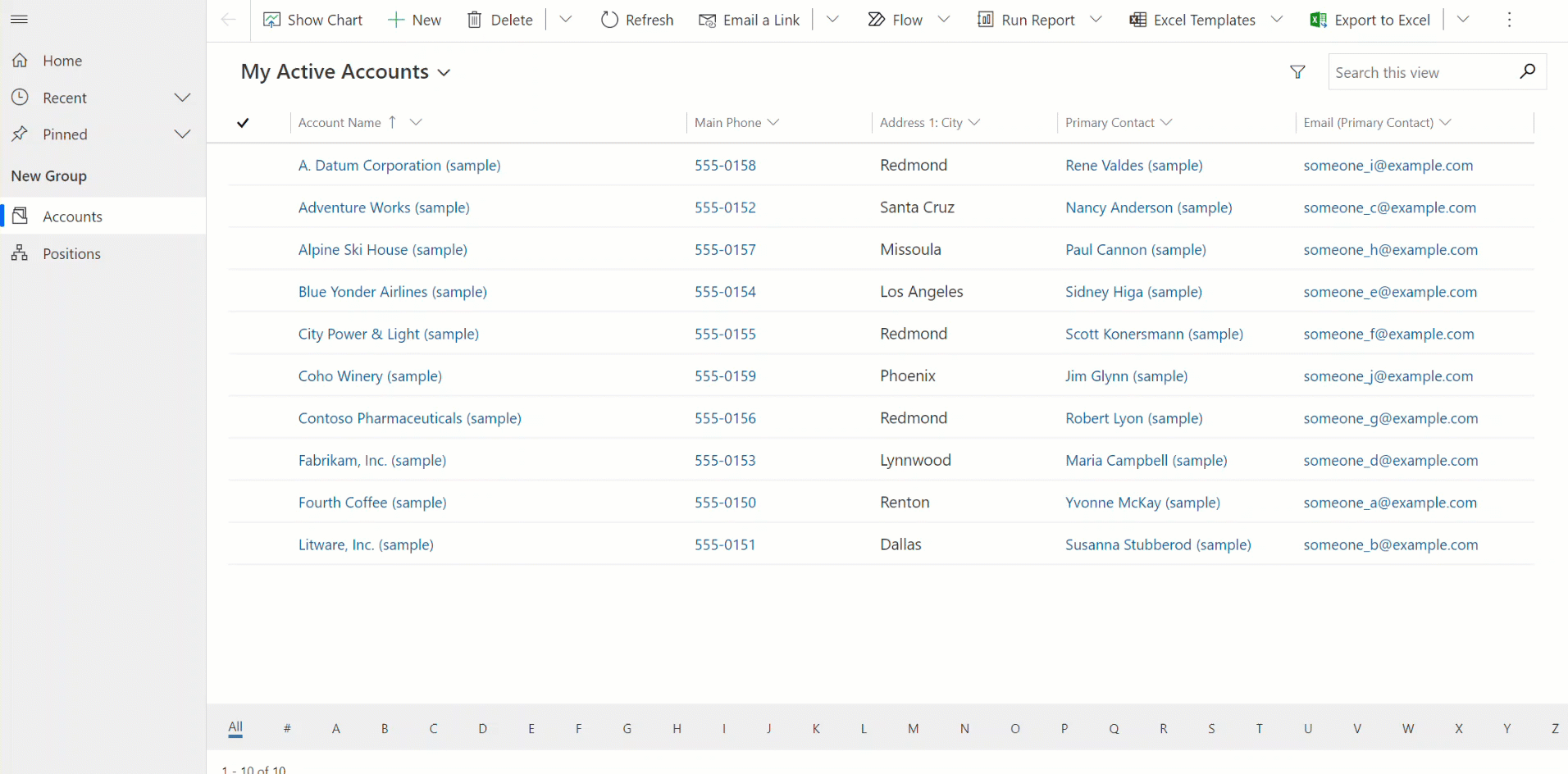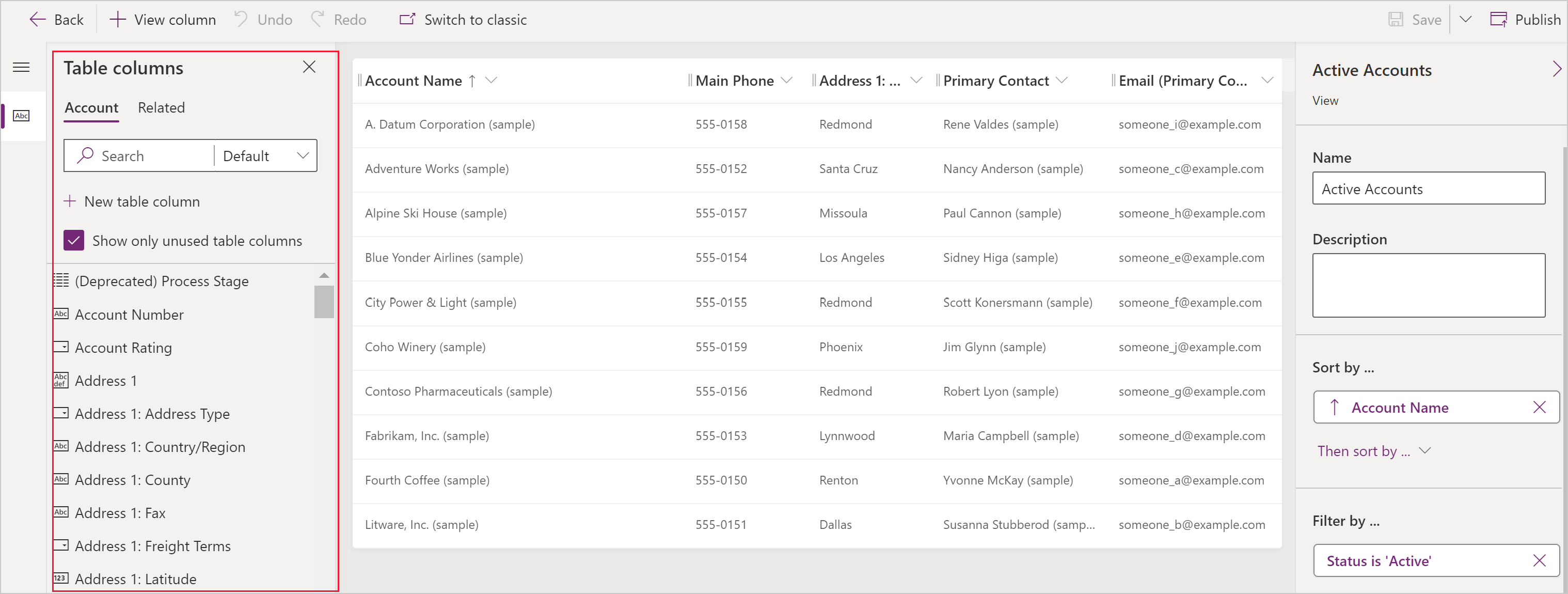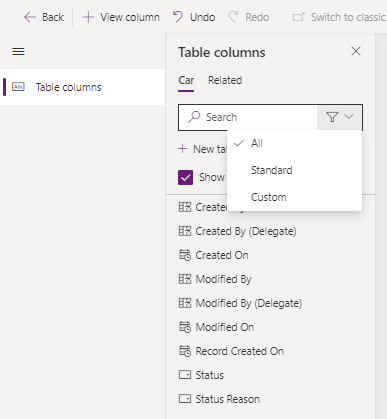Create and edit public or system views
Model-driven apps can contain a range of views, so that app users can open the most suitably presented and filtered version of the table. Views can be Personal, **System, or Public.
Note
Views are tied to a given table. However, you can select views during the process of creating a model-driven app. By default, ALL views are made available in an app.

Tip
For a general introduction into views, go to Understand views in model-driven apps
Create a public view in Power Apps
Public views are available for users to display table records. App makers can create and configure public views using Power Apps.
- Sign in to Power Apps and select an environment
- On the left navigation pane, select Solutions, and open the solution you want. If the item isn’t in the side panel pane, select …More and then select the item you want.
- Open a table, such as the account table, and then select the Views area.
- Select New view on the command bar, and then enter a View name, and optionally enter a Description.
- If you want to have suggestions from Copilot for the columns to create for the form based on the View name and Description values, select Get AI generated column suggestions. For more information about using this AI feature, go to Column suggestions by Copilot.
- Select Create.
Note
Public views created in Power Apps that include Contains data or Does not contain data filters don't appear in the list of saved views in Advanced Find.
Edit public views from a table
In the solution that you opened earlier, create a new table or find an existing table where the public views need to be edited.
Sign in to Power Apps and select an environment
On the left navigation pane, select Solutions, and open the solution you want. If the item isn’t in the side panel pane, select …More and then select the item you want.
Open a table, such as the account table, and then select the Views area, and then open the view you that want to edit.
In the view designer, select + View column to add additional columns needed within the view. Or, select Table columns in the left navigation and drag the table columns into your view.
Tip
Only include the specific columns you need for the view, as larger numbers of columns in a view can cause degradation of grid performance.

Tip
The Default view in the Add column pane displays all columns. If preferred, select Standard or Custom to display a subset of columns.

In the view designer, the following tasks can be performed:
- To change the column filtering select the header of the column where the filter is required, and then in the dropdown list select Filter by.
- To change the column sorting select the header of the column where sorting is needed then select Sort A-Z, Sort Z-A, Sort descending, or Sort ascending.
- You can configure multi-column sorts by holding Shift when selecting a sort option to add a sort condition to the set of the existing sorts.
- Configure column width by selecting and dragging the column to the desired position.
- Reorder columns by dragging a column to the desired position.
Note
Depending on the data type of the column the term Sort A-Z/Sort Z-A or Sort ascending/Sort descending is used
Tip
It is also possible to change column order by selecting the column header and then selecting Move Right or Move Left.
Select Publish to save the view and make it available for other users in your organization.